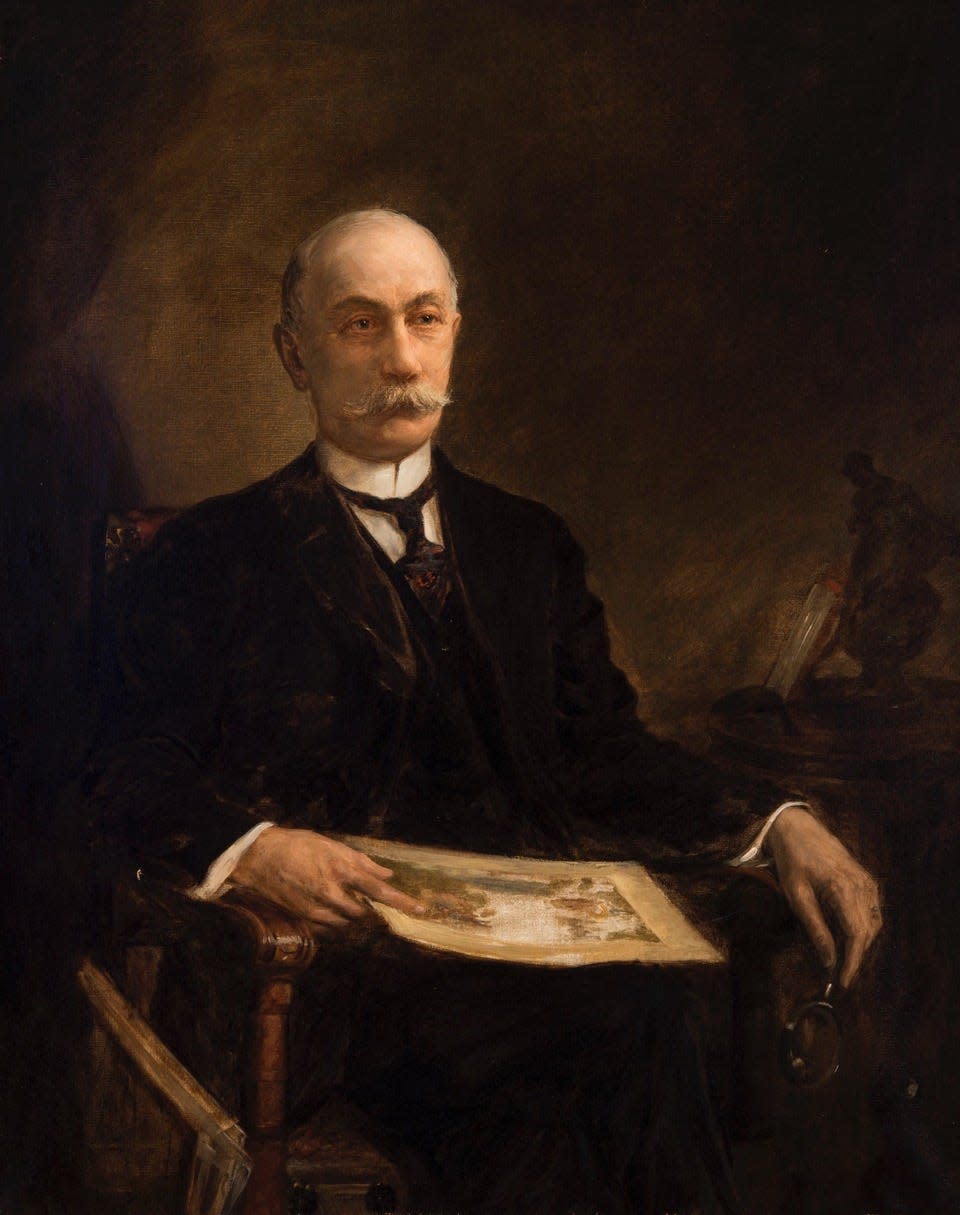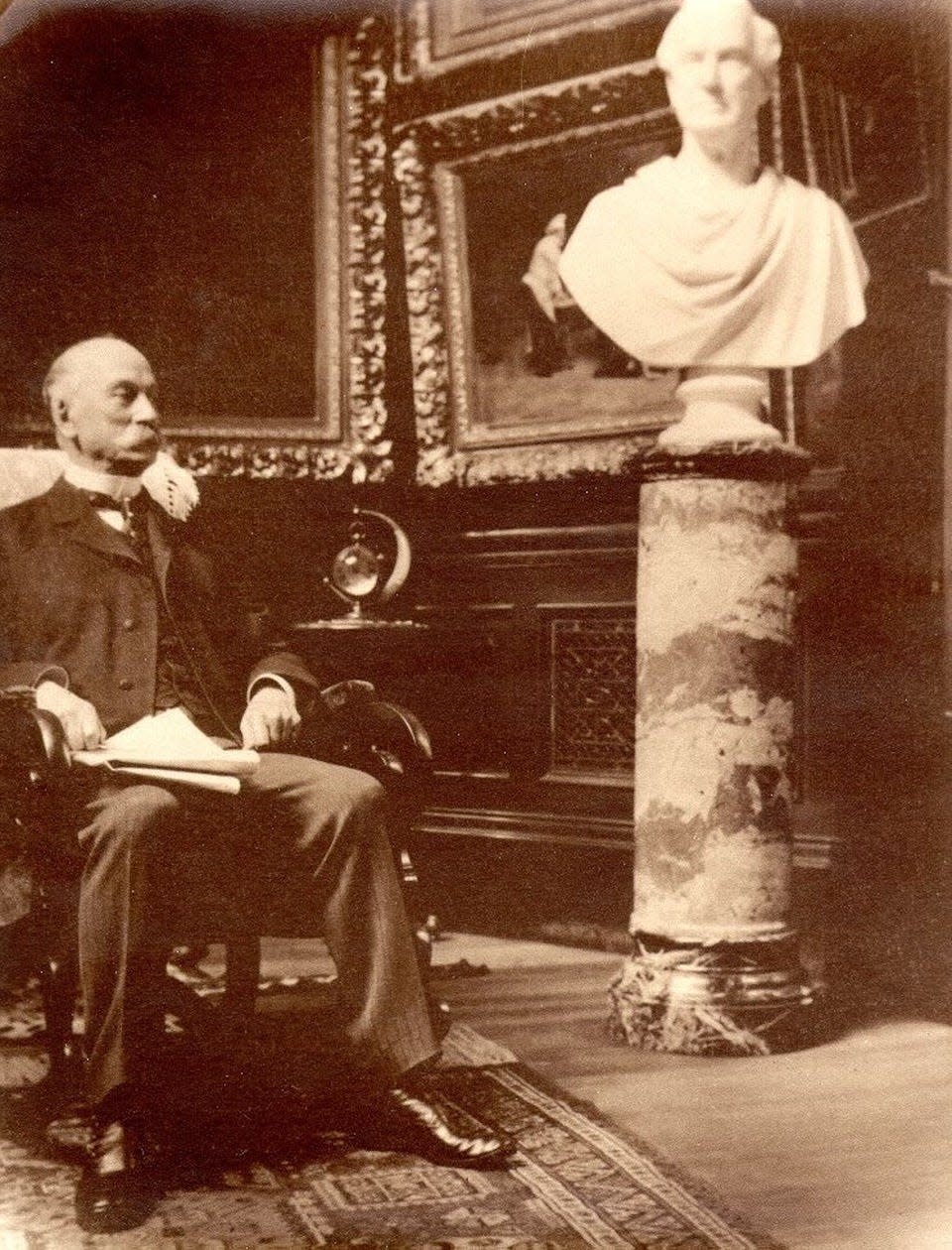'Who is Mr. Arnot?' Elmira's Matthias Arnot made a splash on the international art scene
In the late 19th and early 20th centuries, Americans with vast fortunes from mining, railroads and banking were a well established force in the European art market. Impoverished and debt ridden British nobility had to sell their estates, furnishings and possessions to pay their bills.
According to Christopher Maxwell in “Apollo Magazine,” the “sale of the century: Hamilton Palace was one of Britain’s greatest ducal houses, but when it was demolished in the 1920’s its contents had already been sold in a series of spectacular auctions.” The first sale of the ducal treasures took place in a “landmark auction” in 1882.
The Arnot Art Museum records in its “Historical Summary” that Matthias Arnot attended the 1882 auction, “where his high bids on the collection at auction gained him international fame. A London correspondent for the New York Tribune noted that ”the general impression is that no formidable competitor from America had had much to do with the bidding prior to Mr. Arnot. Mr. Arnot bought one picture for $10,000 … Who is Mr. Arnot?”
The Arnot Art Museum staff noted that ultimately he purchased 18 pieces of the over 60 that he bid on for the $10,000. They also stated that “the shipment of these pieces back to the United States was also historically significant as Mr. Arnot’s successful argument against the 10% import duty changed the definition of 'antique' as used in customs regulations at the time. With this ruling, all the works created prior to 1700 that Mr. Arnot purchased were admitted as antiquities and therefore duty free.”

Matthias Hollenbeck Arnot was born Nov. 10, 1833 in Elmira, New York. He was the third son of John Arnot Sr. and Harriet Tuttle Arnot. His siblings were Stephen Tuttle Arnot, John Arnot Jr., Marianna Arnot Ogden, Aurelia Arnot and Fanny Arnot Haven. In 1856 Matthias graduated with high honors from Yale University, where he had also been a member of the varsity boat crew.
Upon his return from Yale, young Arnot took up work in the Chemung Canal Bank where his father had been president since 1842. The bank would become Matthias’ career. He began at the bottom and succeeded to the presidency in 1873 when his father died. In 1902 he would guide the bank into the “most important and far reaching business transaction … consummated in Elmira in half a century. The Elmira Trust Company was consolidated with the 'famous Chemung Canal Bank' creating the Chemung Canal Trust Company." (Star Gazette, February 15, 1910)
Arnot insisted that the name Chemung Canal be retained.
To further demonstrate his community interest and his business acumen, in 1906 he played a key role in bringing Kennedy Valve to Elmira. He sold land to the company for $8,000 for which he had paid $24,000 and contributed $10,000 to the Chamber of Commerce Development Fund. His efforts brought hundreds of jobs to Elmira.
Matthias Arnot never married and unlike his brothers avoided politics. For nearly 20 years he did serve by appointment on the Board of Managers at the Elmira Reformatory and as a Commissioner at large on the Elmira Board of Education. Over the years he served as President of the Arnot Realty Corp., Elmira Lumber Co., Chemung County Gas Co., Junction Canal Co., and Plank Road Co.
“He declined to be held up to the public in the true light of his charity and would cloak handsome bequests under the name ‘a friend’ or ‘cash’ ... He loved and admired that which was beautiful.” (Telegram Feb. 20, 1910)
More: Elmira's Strawberry Mansion catches Cheap Old Houses spotlight. How much it's listed for
Upon his death Matthias wanted residents of the Elmira area to have access to "man’s best creative inspirations. And he left a legacy of fine arts now called the Arnot Art Museum" (undated article in Chemung Valley History Museum files).
The Museum, formerly named the Arnot Art Gallery until 1969, is located in the old Arnot home built in the late 1830’s, between Market and Church Streets on the west side of Lake Street. When John Arnot Sr. died in 1873 the house passed into the possession of Matthias. When he died on Feb. 15, 1910, he left it to a board of trustees which was directed to maintain the property for the enjoyment of the people. (History Museum files)
Shortly after his death the newspaper reported on his will which had been written in 1908. “There are specific bequests which total about $700,000, the greater proportion of this being the home on Lake St. and the painting and art collection therein, valued in all at $400,000 and an endowment fund of $200,000 and a fund of $10,000 to remodel the home into a public art gallery and library, all of which is a gift to the City of Elmira.” (History Museum files)
The trustees employed the Elmira architectural firm of Pierce and Bickford to convert the family home to an art gallery over the next two years. Matthias had added a large gallery in 1885 to house his growing collection.

It should be noted that in addition to the museum, generous donations totaling approximately $90,000 were made to the Arnot Ogden Hospital, the Southern Tier Children’s Home, Yale University, the Board of Education, the Children of Israel, seven Protestant and Catholic churches and a variety of individuals.
Before incorporation of the art gallery there was a glitch. The state comptroller’s office questioned County Treasurer John H. Deister’s appraisal of the estate. He had declared those things which Matthias had left for the art gallery exempt from taxation. The state claimed $26,750 in taxes due. The Star Gazette reported on March 4, 1911 that County Judge and Surrogate George McCann “has decided that the half-million bequest left the city by the late M. H. Arnot, in the form of the Arnot Art Gallery is not taxable.”
On May 17, 1913 the Star Gazette reported, “By exact count, two hundred persons visited the Arnot Art Gallery on the first morning of its opening to the public … The hallways and both galleries were thronged during the morning, and it is safe to say that the gallery will prove a most popular place for lovers of art.” Total attendance on the first day was 1,333 persons.
This article originally appeared on The Evening Tribune: How Elmira banker, philanthropist founded Arnot Art Museum

